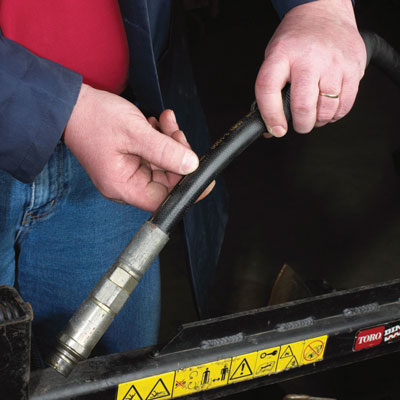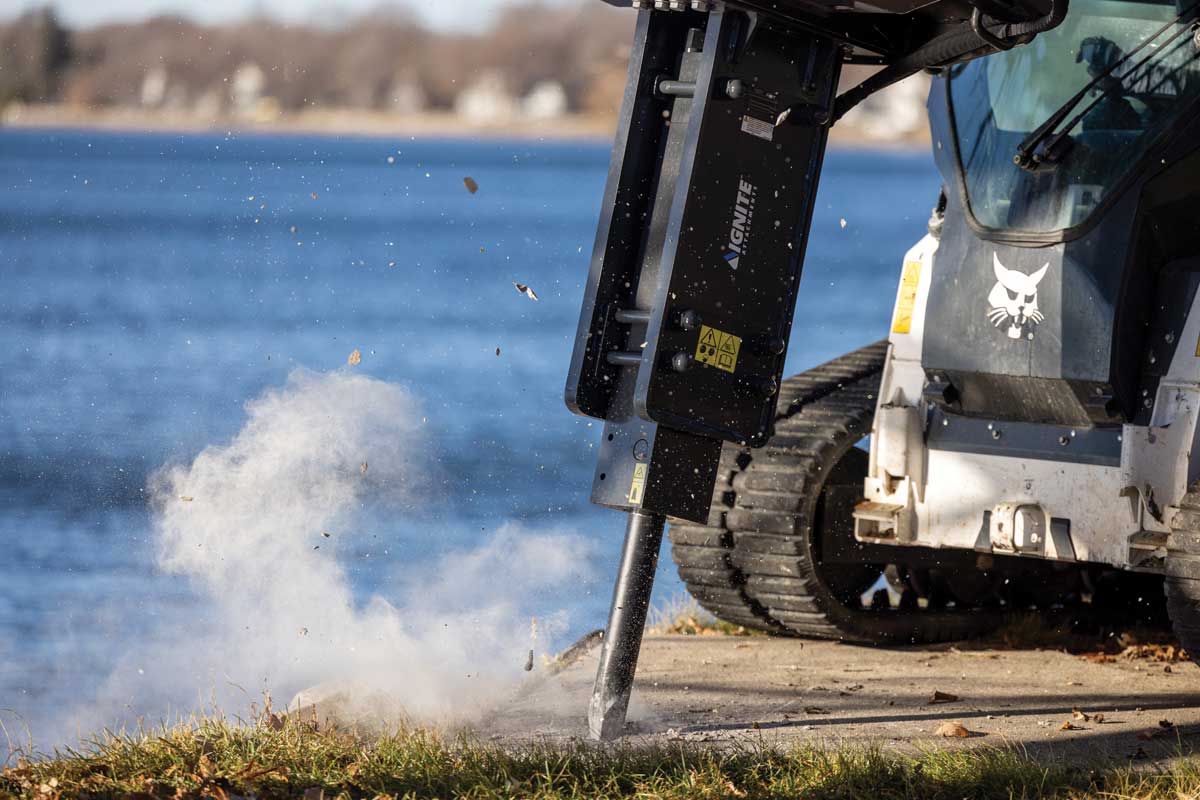COMPACT TOOL – Trencher Attachment Maintenance
 Routine maintenance on a trencher attachment for a compact tool carrier can spell the difference between a productive, profitable attachment and an unexpected breakdown. Because trencher attachments have many ground-engaging parts, it’s typical for some Components to wear with use over time. The most commonly affected parts are the trencher chain and trencher bar. Although parts Inevitably wear with time, the following routine maintenance tips can help extend their life.
Routine maintenance on a trencher attachment for a compact tool carrier can spell the difference between a productive, profitable attachment and an unexpected breakdown. Because trencher attachments have many ground-engaging parts, it’s typical for some Components to wear with use over time. The most commonly affected parts are the trencher chain and trencher bar. Although parts Inevitably wear with time, the following routine maintenance tips can help extend their life.
 Retain proper chain tension. When a chain is tensioned too loosely or too tightly, the trencher will not perform to full potential, prematurely wearing parts due to unnecessary stress. This stress can cause wear on the inside of the chain, trencher boom, roller and drive sprocket. Chain tension refers to the chain sag from the bottom of the trencher boom to the top of the chain. This “sag” needs be maintained at 2 to 3 in. When working in wet soil types that collect on the chain, the adjustment should be at 3 in. Remember to clean the chain prior to making any adjustment.
Retain proper chain tension. When a chain is tensioned too loosely or too tightly, the trencher will not perform to full potential, prematurely wearing parts due to unnecessary stress. This stress can cause wear on the inside of the chain, trencher boom, roller and drive sprocket. Chain tension refers to the chain sag from the bottom of the trencher boom to the top of the chain. This “sag” needs be maintained at 2 to 3 in. When working in wet soil types that collect on the chain, the adjustment should be at 3 in. Remember to clean the chain prior to making any adjustment.
Check chain wear. To calculate wear, lay out the chain and then push it together on each end so the chain is at its shortest length. Use a tape measure to measure the length of the chain from end to end, marking the points at which the chain is measured. Pull on each end of the chain until it is extended to its fullest length and measure at the same marked points. The chain should be replaced if there is more than a 3 percent difference between its collapsed length and fully extended length.
Examine tooth condition. Trencher teeth come in three basic styles: “cupped” for breaking up loose soil, “rock” used in loose rock, and “bullet” for use with solid rock. Many of these tooth styles include carbide inserts on their sides, tops or faces. When this carbide is worn flat or worn away, the tooth needs to be replaced. Teeth may look similar, but they can vary by height and the cup depth. Mismatched teeth to OEM specification can put additional load on a trencher or power unit and can shorten the life of a hydraulic system.

Visually inspect the drive sprocket of the trencher on a periodic basis. When the drive sprocket becomes worn, its drive points will not properly engage with the chain. At that point, it’s worth investing in a new one. Eliminating the amount of additional wear on the chain will outweigh the expense of the sprocket.
Perform daily maintenance. Inspect, clean and grease the trencher daily at the beginning or end of the day. Dried mud and debris lodged in trencher parts can cause increased wear on the mechanism, so it’s important to keep the attachment clean.
Inspect boom wear. If you are using a high-quality boom — which supports and guides the chain — it’s reversible and has a wear plate welded to both the top and the bottom. That way, it can be removed and rotated occasionally to extend the life of the boom. The ground side of the boom wears faster than the top side because of the dirt rotating through and the ground pressure applied on the chain against the boom. Most wear on the plates occurs from the nose wheel to approximately two-thirds of the way up on the boom (since most trench depth is obtained in this section of the boom). A boom should be replaced prior to the chain wearing through the wear plate.
Dan Roberts is a technical service representative for The Toro Co., based in Bloomington, Minn.




